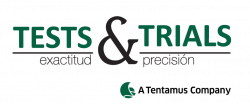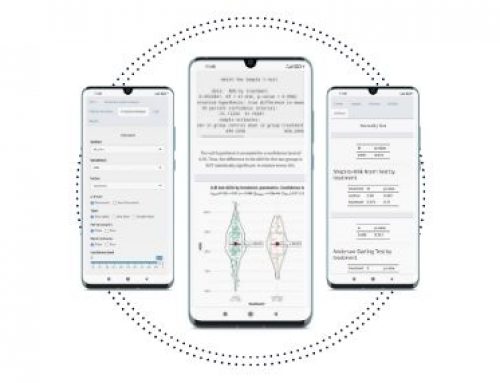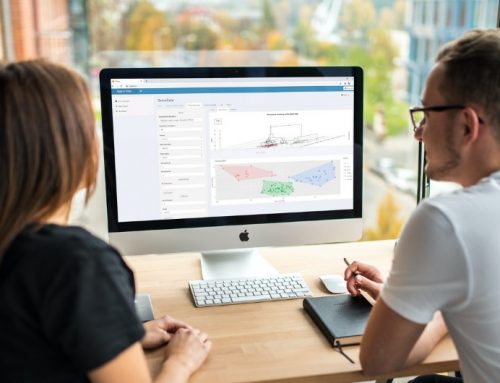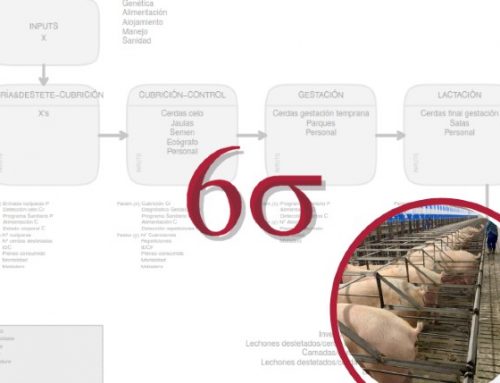The power of information in Animal Production
We will start this post with the following question:
Let’s imagine a farm with 10,000 chickens, where every day many different situations occurs. Unless we have a system of control in place and record them, after a week (or less), we will have missed the opportunity to make a change. A change that would have had a positive impact on our business profitability.
As the way we have explained this, It may seem that a company that does not have monitored process to act in these situations will have difficulties to adapt. Nevertheless, it is much simpler. Sometimes, what can make the difference is just having one or two sheets designed for that situation at hand, where you can rapidly record a number, word, or phrase. Once the data has been collected, it only remains to follow the famous data – information – knowledge scheme.
Information in the agricultural sector and animal production
In view of the essential role that the agricultural sector contributes in the development of countries, and the increase in resources that we have at our disposal to extract knowledge from data, few are the companies that do not seek to innovate or improve to adapt to market changes.
Food that comes from animals provides essential nutrients for human health and creates many jobs. Even Animal Welfare has a positive impact on the environment. For example, livestock provides animal fertilizers for soil enrichment, or disease control can prevent zoonoses. These basic but essential situations for life itself, makes worth investing in statistics and information. It will not only increase profitability but also contribute to improve the quality of life worldwide.
Animals that have disease problems need more resources to recover and often do not produce as much as if they had not fall in. This leads us to the conclusion that healthy animals are more productive, and we must be aware of what affects them to make decisions and avoid losses.
Information helps business development
As strange as it sounds, many developing countries do not have sufficient statistical methodologies implemented among businesses, and neither have professionals that collaborate in the economic and social development of their companies. But not only is it important to know how to analyze the information of the facilities, but it is also necessary to have a planning and integration program that considers all the elements.
Due to the special characteristics of agricultural data, we cannot use a single type of technique or methodology to group and analyze them. Each situation, animal, facilities, … have their own peculiarities that mean that we must be prepared for different scenarios and have numerous sources for registration.
This seems like a controversy with the introductory paragraph of this post, where we were talking about one or two sheets. But it is not at all. What we were referring to is that we must have various sources adapted to different situations. Which is not efficient is to have 50 sheets on hand for each type of record (we would need more than 1,000 sheets for a day in such case).
But to understand your data you will also need a methodology for its valuation.
How do I avoid always carrying an excessive number of sheets with me to record information for each type of probable event?
With the use of statistics.
It is a cycle: if we can detect patterns (behavioral, of occurrence, …) and control our processes and their performance, we will be able to make estimates. Only then we will be prepared for each one.
Statistics help us see where we are, where we are going to and how we can improve.
Companies depend on the numbers.
This is the only way to make data-driven decisions without uncertainty, which allow us to solve problems, move towards continuous improvement and increase our competitiveness.
How do I evaluate the quality and reliability of the information I have, and if it helps me to make decisions?
We could summarize the answer to this question in the following three aspects:
Accuracy: The more accurate and complete the information is (which will depend mainly on our data collection and preparation process), the higher quality it will be. But let’s never forget the part where we extract knowledge from this information, which will rely on the statistical analysis.
Opportunity: Establishing efficient information systems should help us discover situations that we had not previously thought about. Analyzing the data, we can detect improvements or new paths that will help increase the facilities profitability.
Quantity: The value of the data is incalculable, but not always. If the data collected is messy, or It’s not even that because we are basing on our own intuition and memory, It will have no value because reliable and secure information cannot be extracted. But this does not mean that It will be better to collect as much data as possible: we must act according to the objectives we have and adapt our work methodology to get the most out of the context of use. For example: At the time of analysis, do you need to know the day you changed the type of feed in a litter to check the environmental status that was three weeks before then? This case is somewhat extreme, but it sure has helped you visualize what we mean by “in accordance with the objectives.”
This post aims to promote the importance of information for animal production
People often assume that their sensations are accurate because they have seen for ourselves how, for example, an animal has decreased its productivity over time. And they may be right, there are some factors easily detectable without statistics. It is also possible to be lucky when trying to solve those problems on your own. But let’s ask ourselves two questions:
What happens if the measures we take do not solve the problem, or make it worse? This occurs, and it is usually because the root of the problem has not been correctly detected. In addition to wasting time and money, productivity has remained at the same level (or it is no longer possible to increase it because it is too late).
Let’s imagine that we carry out a control process and so, we have information about that animal since it entered the farm, and more data. Later, we carry out an analysis to extract knowledge. Not only will we rely on evidence to detect the cause of the event and make a decision about what to do with that animal, but we will also be able to detect whether this is beginning to happen to other populations within my facilities.
How does Tests and Trials collaborate in spreading the importance of extracting data, analyzing it and making decisions based on evidence?
As experts in data analysis in animal production, we help companies to extract the maximum knowledge and be able to make data-driven decisions by using statistical methodologies adapted to each situation. Through our statistical publications in several journals from the sector such as Suis or AgriNews, we seek to promote the importance of extracting knowledge for decision making, especially in a sector with such variability as this one.
We enjoyed writing this article and hope our readers did too! If so, you can support this content space on the blog by subscribing to our newsletter and finding out what is new. In addition, you can download our statistical e-book for free, where we explain how to prepare the data and make a comparison between proportions.
References
FAO. (1993). Recopilación de datos sobre los animales y productos pecuarios. http://www.fao.org/fileadmin/templates/ess/ess_test_folder/World_Census_Agriculture/Publications/FAO_SDS/SDS_4_Recopilaci%C3%B3n_de_datos_sobre_animales_y_productos_pecuarios.pdf





